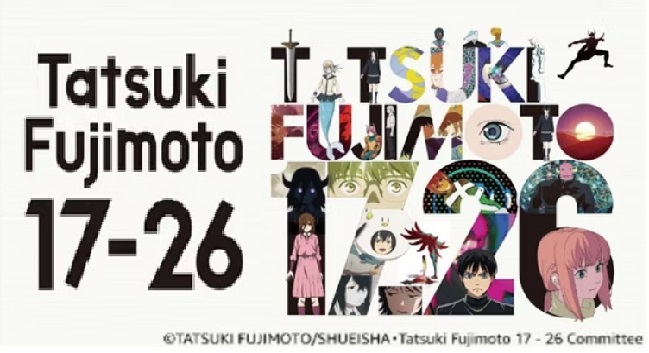English Dub Season Review: Tatsuki Fujimoto 17-26 (Season One)
Six studios and seven directors adapt the early works of Tatsuki Fujimoto, the mastermind behind the wildly popular Anime franchise, Chainsaw Man, and are now converted into an anime anthology. Each episode is an anime adaptation of a short story he drew from ages seventeen to twenty-six, including the first manga he ever submitted for competition. Watch as vivid tales of young love, chaos, madness, and the bonds between people unfold in each episode.
On the technical side, this anthology was the joint effort of 6 animation Studios. ZEXCS, Lapin Track, GRAPH77, 100Studio, Studio Kafka, and P.A.WORKS With character designs by Moaang (Garden of Remembrance film), Naho Kozono (Onna no Sono no Hoshi), Tomoko Mori (Ushio & Tora, two seasons) MYOUN, Nozomi Shimazaki, Kōhei Tokuoka, Hisashi Higashijima (Mashle: Magic and Muscles), and Haruka Sagawa (Call of the Night) and All were directed by Seishirō Nagaya, Nobukage Kimura, Nobuyuki Takeuchi, Naoya Ando, Tetsuaki Watanabe, Kazuaki Terasawa, and Osamu Honma with a few writing the screenplays of them but for the screenplay’s outside of those specific directors, they were written by Teruko Utsumi, Tatsuo Kobayashi, and Yōko Yonaiyama.
Tatsuki Fujimoto’s early anthology 17–26 is a whirlwind of creativity, emotion, and unapologetic weirdness. Even in his youth, Fujimoto’s mind seemed to overflow with ideas, producing stories that are as immediate and raw as they are inventive. The anthology barrels into each concept with confidence, refusing pretension and delivering experiences that range from heartfelt to absurdly funny. Each short is a snapshot of Fujimoto’s versatility, from genuine emotional depth to complete unhinged humor, often within a mere twenty minutes. While the anthology format can sometimes feel fragmented, the sheer energy and honesty of his storytelling make each piece compelling in its own right.
At the heart of the anthology lies a rich exploration of love in all its forms. Whether it’s romantic, familial, or platonic, it’s all portrayed through wildly different yet emotionally cohesive stories. Fujimoto’s storytelling balances tenderness with irreverence, using fantastical, tragic, and comedic scenarios to reveal the sincerity behind human emotion. Episodes like Nayuta of the Prophecy delve into empathy and the pain of societal misunderstanding. At the same time, Mermaid Rhapsody captures the wonder and vulnerability of young love in a fairy-tale setting. Other entries, such as Sisters and Woke-Up-as-a-Girl Syndrome, explore identity and connection through humor and absurdity without losing emotional depth. Across these vignettes, Fujimoto blends the surreal with the heartfelt, showing how love, whether as devotion, defiance, or simple human understanding, remains a transformative force that binds his eccentric anthology together.
Despite its creative ambition, the anthology isn’t without flaws. The quality of its shorts varies noticeably, with standouts like “Nayuta of the Prophecy” and “Mermaid Rhapsody” contrasting sharply with weaker entries such as *Sasaki Stopped a Bullet* and “Love Is Blind”, which struggle to leave a lasting impact. Some stories lean too heavily on absurdity or shock value without fully developing their emotional or narrative threads, while others feel more like experimental sketches than complete tales. The rapid tonal shifts from heartfelt to bizarre to unsettling can also feel disorienting, making the viewing experience uneven for those expecting consistency. Even *Sisters*, though intriguing, plays like an early prototype of a later work he did called Look Back, hinting at ideas Fujimoto would later refine more effectively. Still, these imperfections come with the territory of experimentation, and the anthology’s willingness to take bold risks remains a defining part of its charm.
In terms of visuals and sound, the anthology is a remarkable achievement. Its animation style varies widely from painterly and atmospheric to crisp, energetic, or minimalistic, yet each approach is carefully tailored to the tone and emotion of its story, whether emphasizing humor, horror, action, or tenderness. Movement, composition, and color are executed with precision, giving both action sequences and quiet emotional moments a strong sense of presence. Music and sound design complement the visuals flawlessly, heightening tension, accentuating comedic timing, or underscoring heartfelt beats, while voice acting consistently brings characters to life, balancing dramatic intensity with playful or subtle delivery. Even in shorts where the story may falter or embrace absurdity, the production quality elevates the material, reflecting Fujimoto’s imaginative vision and the creative freedom of the studios involved, ultimately transforming the anthology into a fully immersive audiovisual experience.
Overall, Tatsuki Fujimoto’s 17–26 is a bold, inventive, and deeply personal anthology that showcases the author’s boundless imagination, emotional range, and tonal versatility. While some episodes land more effectively than others and a few shorts are experimental or uneven, the collection as a whole demonstrates Fujimoto’s unique ability to blend humor, heartbreak, absurdity, and sincerity in ways few contemporary creators can. Fans of his later works, including Chainsaw Man and Look Back, will recognize the proverbial seeds of his signature style, while newcomers can still enjoy a wildly inventive, visually striking, and emotionally resonant series of shorts. Across fantastical, comedic, and poignant stories, the anthology explores love, life, and human connection with both audacity and tenderness, making it a messy, exhilarating, and unforgettable experience. While it remains uncertain if the manga continuation “22–26” will ever be animated, this 8-episode anthology proves that Fujimoto is an unmistakably unique voice that’s capable of blending chaos and sincerity to create stories that are as trippy & weird as they are unforgettable.

"There are also other characters that come and go (also owned by the Warner Bros. Discovery conglomerate media company)."
Huh. Is that just referring to other characters from the show itself, or is this implying that the new season is going to have cameos from other WBD IPs